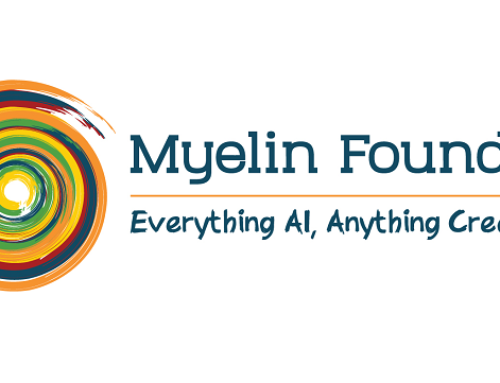If the future of video games is streaming,low bandwidth is a party-pooper. But AI and Deep Learning can present much-needed solutions for a seamless and lag-free cloud gaming experience.
Vishvesh Ravi does not have an elaborate setup but his existing equipment — a laptop with a 2GB graphics card, a mechanical keyboard, and a sleek mouse — is enough to get him battle-ready for Counter-Strike or Rainbow Six Siege. He is a gamer like any other: delicately balancing college to play an uninterrupted five to seven hours a day. But the latest gaming updates and hardware requirements are forcing him to upgrade, costing him a bundle.
Cloud gaming is the level up he needs.
Imagine being independent of yesterday’s consoles and having access to multiple high-end games without needing to upgrade your hardware. That’s what cloud gaming can do. To better understand, think of cloud gaming as something similar to streaming videos, with interactive capabilities. In startup elevator pitch parlance: it’s like Netflix for gaming.
Unpacking Cloud Gaming
Today, when you play a game, you download it to your system to play it locally. Your gadget — console, television or computer — relies on its internal hardware to give you a smooth gaming experience. But with cloud gaming, none of that will be required as
internet streaming would deliver the game to you. Simply put: You would log on to the cloud and access the game files stored on the server, just as you watch videos or stream music on the internet.
“The prospect of cloud gaming is fascinating,” Vishvesh agrees. “It eliminates all kinds of hardware limitations and opens a gamut of options, but I am not sure if the internet bandwidth can handle it.”
He is right.
Low bandwidth or a slow internet connection is an entry-barrier comparable to hardware limitation. Just as lower-resolution YouTube or Netflix videos take up less bandwidth, a less powerful internet connection would mean that the gameplay “video” would not be as clear, sharp or rich in detail as the one rendered by high-end gaming. Poor quality as well as rebuffering and high latency are complications that can annoy gamers exceedingly. “There are certain shots I can only hit if I have a better internet connection,” Vishvesh says. “High server latency means death in the game.”
Previously, while discussing how deep learning and AI can improve online video streaming, we mentioned that Google’s to-be-launched game streaming platform, Stadia, would need a sustained 20 Mbps connection to run a game at 1080p, 60 frames per second. And for better resolution such as 4K, it would need a 30-Mbps strong internet connection.
India’s average mobile data download and upload speed hovers around 9.93 Mbps and 3.82 Mbps respectively.
No one likes poor quality of streaming, gamers, least so. A lay user may not notice the difference between a 480p and 720p video, but gamers do. Responsiveness of the game is key to quality gaming experience.
Unlike streaming videos, the issue of rebuffering and high latency is magnified in gaming. When a player responds to an opponent, the command goes to the cloud and a video chunk is sent back to the gamer. This process must be instantaneous for the game to proceed smoothly. Any delays, especially led by bandwidth issues, can be lethal for the gamer, where even a millisecond lag would convert victory into loss.
So even if the streaming platforms like Stadia, PlayStation Now, Stream Link or Vortex make gaming available to all, the question is, how will it become accessible?
The Advent of 5G and Potential Bottlenecks
India is a few years away from fully adopting 5G, but 5G might not be the allheal we’re touting it to be. Consider this: the problem of traffic snarls is not solved by converting a four-lane highway into an eight-lane. The expansion only incentivises car-ownership, and more four-wheelers spew on to the road. Similarly, as more devices join the network, 5G too, will experience congestion that could reduce your smooth connection to a painful crawl.
The problem is accentuated with smartphones when people play games on-the go and are susceptible to greater network variations. And unlike video streaming which is unidirectional and for passive consumption, gaming is active and bidirectional. Here, it’s not just the download speed that matters, but also the upload speed.
Using AI and Deep Learning to Improve Streaming
During cloud streaming, data are sent from the cloud as chunks of videos. A steady high-speed internet connection is naturally required for a smooth experience. This means that the problem of buffering or latency, also experienced while trying to maintain a high Quality of Experience (QoE) in online video streaming, persists.
But just as AI and deep learning can drastically improve QoE in online video streaming, similar solutions apply to cloud gaming as well.
“The Deep Neural Network (DNN) has an ability to learn from the high-volume data of the previous instances of the game and of similar gaming genres. DNN can then help compress those video chunks to super low-resolution. These can be sent at a lowest possible network, and upscaled at the device’s end for an ultra HD gaming experience,” Ganesh Suryanarayanan, Co-founder and CTO, Myelin Foundry, says.
The challenge, however, will be with on-the-edge upscaling while avoiding delays that gamers are highly sensitive to. Myelin Foundry is working on the challenges of ultra HD zero-delay video streaming, and gaming is an exciting domain we are currently exploring as an adjacency.
Not only can this innovation ensure that seamless cloud gaming becomes a development within reach, it would also make, as Ganesh says, “Gaming consoles obsolete, just as the advent of streaming made CDs and DVDs obsolete”.
The future of gaming doesn’t end here.
While deep learning and AI can play a significant role in creating a flawless cloud-gaming experience, there’s more to how the technology can stir the gaming world. Consider, for instance, novel use cases in game development and experiences such as virtual scene generation.
Imagine a world where you as a gamer can create your own virtual universe, and invite your friends to play. With deep learning-driven automation, that day may not be very far away.





